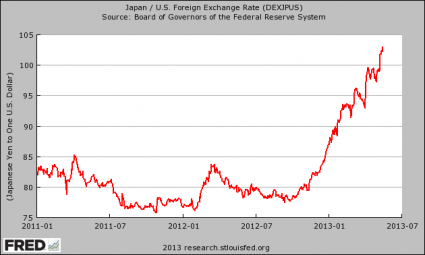 This is the month when the future of the eurozone will be decided. This week, Greek leaders will meet with European officials to discuss what comes next for Greece. The new prime minister of Greece, Alexis Tsipras, has already stated that he will not accept an extension of the current bailout. Officials from other eurozone countries have already said that they expect Greece to fully honor the terms of the current agreement. So basically we are watching a giant game of financial “chicken” play out over in Europe, and a showdown is looming. Adding to the drama is the fact that the Greek government is rapidly running out of money. According to the Wall Street Journal, Greece is “on course to run out of money within weeks if it doesn’t gain access to additional funds, effectively daring Germany and its other European creditors to let it fail and stumble out of the euro.” We have witnessed other moments of crisis for Greece before, but things are very different this time because the new Greek government is being run by radical leftists that based their entire campaign on ending the austerity that has been imposed on Greece by the rest of Europe. If they buckle under the demands of the European financial lords, their credibility will be gone and Syriza will essentially be finished in Greek politics. But if they don’t compromise, Greece could be forced to leave the eurozone and we could potentially be facing the equivalent of “financial armageddon” in Europe. If nobody flinches, the eurozone will fall to pieces, the euro will collapse and trillions upon trillions of dollars in derivatives will be in jeopardy.
This is the month when the future of the eurozone will be decided. This week, Greek leaders will meet with European officials to discuss what comes next for Greece. The new prime minister of Greece, Alexis Tsipras, has already stated that he will not accept an extension of the current bailout. Officials from other eurozone countries have already said that they expect Greece to fully honor the terms of the current agreement. So basically we are watching a giant game of financial “chicken” play out over in Europe, and a showdown is looming. Adding to the drama is the fact that the Greek government is rapidly running out of money. According to the Wall Street Journal, Greece is “on course to run out of money within weeks if it doesn’t gain access to additional funds, effectively daring Germany and its other European creditors to let it fail and stumble out of the euro.” We have witnessed other moments of crisis for Greece before, but things are very different this time because the new Greek government is being run by radical leftists that based their entire campaign on ending the austerity that has been imposed on Greece by the rest of Europe. If they buckle under the demands of the European financial lords, their credibility will be gone and Syriza will essentially be finished in Greek politics. But if they don’t compromise, Greece could be forced to leave the eurozone and we could potentially be facing the equivalent of “financial armageddon” in Europe. If nobody flinches, the eurozone will fall to pieces, the euro will collapse and trillions upon trillions of dollars in derivatives will be in jeopardy.
According to the Bank for International Settlements, 26.45 trillion dollars in currency derivatives are directly tied to the value of the euro.
Let that number sink in for a moment.
To give you some perspective, keep in mind that the U.S. government spends a total of less than 4 trillion dollars a year.
The entire U.S. national debt is just a bit above 18 trillion dollars.
So 26 trillion dollars is an amount of money that is almost unimaginable. And of course those are just the derivatives that are directly tied to the euro. Overall, the total global derivatives bubble is more than 700 trillion dollars in size.
Over the past couple of decades, the global financial system has been transformed into the biggest casino in the history of the planet. And when things are stable, the computer algorithms used by the big banks work quite well and they make enormous amounts of money. But when unexpected things happen and markets go haywire, the financial institutions that gamble on derivatives can lose massive quantities of money very rapidly. We saw this in 2008, and we could be on the verge of seeing this happen again.
If no agreement can be reached and Greece does leave the eurozone, the euro is going to fall off a cliff.
When that happens, someone out there is going to lose an extraordinary amount of money.
And just like in 2008, when the big financial institutions start to fail that will plunge the entire planet into another major financial crisis.
So at the moment, it is absolutely imperative that Greece and the rest of the eurozone find some common ground.
Unfortunately, that may not happen. The new prime minister of Greece certainly does not sound like he is in a compromising mood…
Greece’s new leftist prime minister, Alexis Tsipras, said on Sunday he would not accept an extension to Greece’s current bailout, setting up a clash with EU leaders – who want him to do just that – at a summit on Thursday.
Tsipras also pledged his government would heal the “wounds” of austerity, sticking to campaign pledges of giving free food and electricity to those who had suffered, and reinstating civil servants who had been fired as part of bailout austerity conditions.
Prior to the summit on Thursday, eurozone finance ministers are going to get together on Wednesday to discuss what they should do. If these two meetings don’t go well this week, we could be looking at big trouble right around the corner. In fact, Greece is being warned that they only have until February 16th to apply for an extension of the current bailout…
Euro zone finance ministers will discuss how to proceed with financial support for Athens at a special session next Wednesday ahead of the first summit of EU leaders with the new Greek prime minister, Alexis Tsipras, the following day.
However, the chairman of the finance ministers said the following meeting of the Eurogroup on Feb. 16 would be Greece’s last chance to apply for a bailout extension because some euro zone countries would need to consult their parliaments.
“Time will become very short if they (Greece) don’t ask for an extension (by then),” said Jeroen Dijsselbloem.
The current bailout for Greece expires on Feb 28. Without it the country will not get financing or debt relief from its lenders and has little hope of financing itself in the markets.
And as I mentioned above, the Greek government is quickly running out of money.
Most analysts believe that because of the enormous stakes that one side or the other will give in at some point.
But what if that does not happen?
Personally, I believe that the eurozone is doomed in the configuration that we see it today, and that it is just a matter of time before it breaks up.
And I am far from alone. For example, just check out what former Fed chairman Alan Greenspan is saying…
Mr Greenspan, chairman of the Federal Reserve from 1987 to 2006, said: “I believe [Greece] will eventually leave. I don’t think it helps them or the rest of the eurozone – it is just a matter of time before everyone recognizes that parting is the best strategy.
“The problem is that there there is no way that I can conceive of the euro of continuing, unless and until all of the members of eurozone become politically integrated – actually even just fiscally integrated won’t do it.”
The Greeks are using all of this to their advantage. They know that if they leave it could break apart the entire monetary union. So this gives them a tremendous amount of leverage. Greek Finance Minister Yanis Varoufakis has even gone so far as to compare the eurozone to a house of cards…
“The euro is fragile, it’s like building a castle of cards, if you take out the Greek card the others will collapse.” Varoufakis said according to an Italian transcript of the interview released by RAI ahead of broadcast.
The euro zone faces a risk of fragmentation and “de-construction” unless it faces up to the fact that Greece, and not only Greece, is unable to pay back its debt under the current terms, Varoufakis said.
“I would warn anyone who is considering strategically amputating Greece from Europe because this is very dangerous,” he said. “Who will be next after us? Portugal? What will happen when Italy discovers it is impossible to remain inside the straitjacket of austerity?”
After all this time and after so many bailouts, we have finally reached a day of reckoning.
There is a very real possibility that Greece could leave the eurozone in just a matter of months, and the elite know this.
That is why they are getting prepared for that eventuality. The following is from a recent Wall Street Journal report…
The U.K. government is stepping up contingency planning to prepare for a possible Greek exit from the eurozone and the market instability such a move would create, U.K. Treasury chief George Osborne said on Sunday.
A spokeswoman for the Treasury declined comment on the details of the contingency planning.
The U.K. government has said the standoff between Greece’s new anti-austerity government and the eurozone is increasing the risks to the global and U.K. economy.
“That’s why I’m going tomorrow to the G-20 [Group of 20] to encourage our partners to resolve this crisis. It’s why we’re stepping up the contingency planning here at home,” Mr. Osborne told the BBC in an interview. “We have got to make sure we don’t, at this critical time when Britain is also facing a critical choice, add to the instability abroad with instability at home.”
And if Greece does leave, it will cause panic throughout global financial markets as everyone wonders who is next.
Italy, Spain and Portugal are all in a similar position. Every one of them could rapidly become “the next Greece”.
But of even greater concern is what a “Grexit” would do to the euro. If the euro falls below parity with the U.S. dollar, the derivatives losses are going to be absolutely mind blowing. And coupled with the collapse of the price of oil, we could be looking at some extreme financial instability in the not too distant future.
When big banks collapse, they don’t do it overnight. But we often learn about it in a single moment.
Just remember Lehman Brothers. Their problems developed over an extended period of time, but we only learned the full extent of their difficulties on one very disturbing day in 2008, and that day changed the world.
As you read this, big financial troubles are brewing in the background. At some point, they are going to come to the surface. When they do, the entire planet is going to be shocked.






